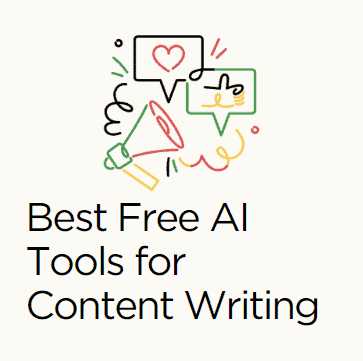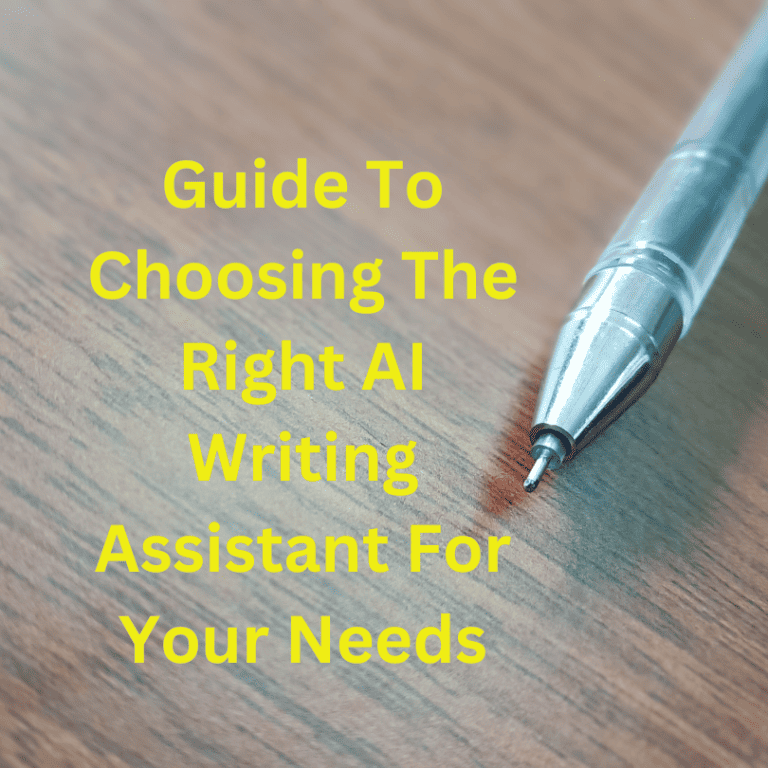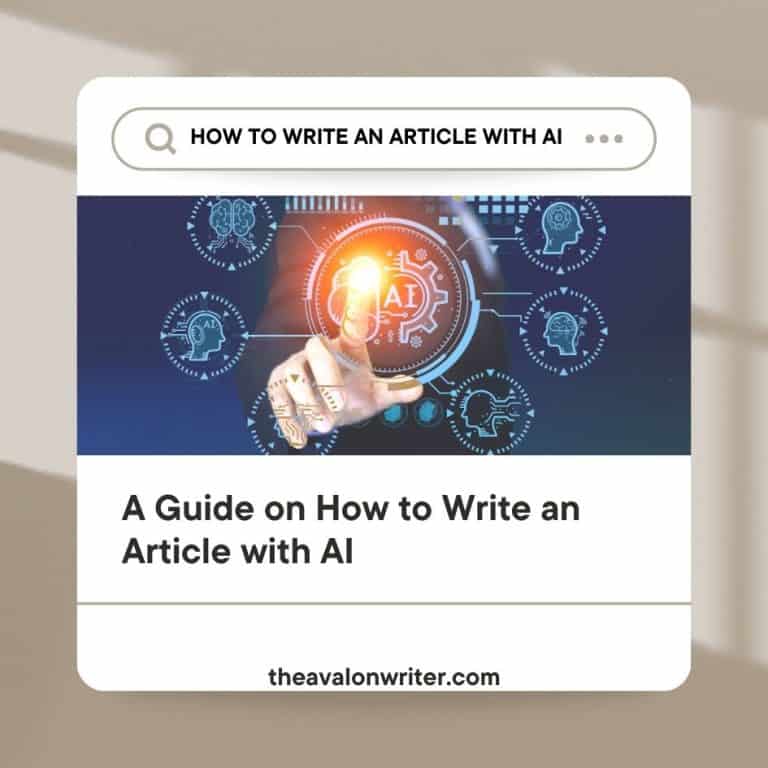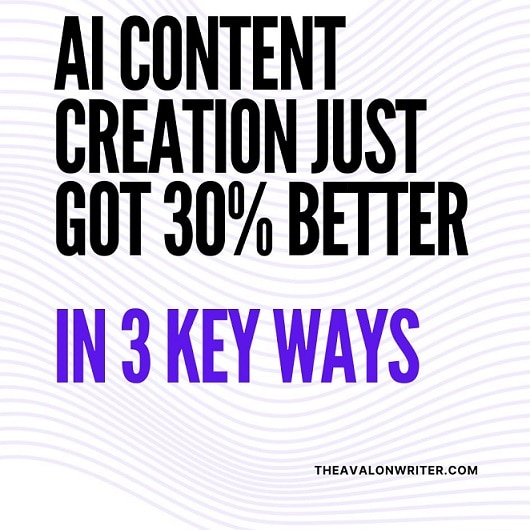Can AI write Articles? A Beginner’s Guide to AI Article Writing
Can AI write articles?
Yes, AI tools can now draft full-length articles without human writing input. These systems leverage natural language processing algorithms trained on massive text data. Leading platforms like Contentbot and Quillbot take a prompt and parameters, then autonomously compose unique pieces of content.
The latest AI models cover diverse subjects when properly configured. Capabilities span producing blog posts, news stories, product descriptions, listicles and more. AI article writing provides key time-savings, content scaling, and ideation benefits. However, given accuracy, creativity, and brand integration limitations, AI-generated drafts need human refinement before final publication.
A March 2023 Statista survey of marketers using AI writing assistants found 53% made only minor edits before publishing AI-generated text. Another 39% did major edits, while just 5% rewrote the text completely (Statista, 2023). Most seem ready to publish with scant changes.
When responsibly combined, AI article tools and skilled writers unlock new productivity levels. The future looks bright for these symbiotic human-AI content partnerships.
Guide to AI Article Writing Key Takeaways
- AI writing software can autonomously draft full articles, saving hours of manual writing time.
- Digital content creation accelerates dramatically with key benefits like reduced costs, scalable volumes, and structured article outlines for humans to refine.
- Getting started involves carefully selecting an AI writing tool, writing clear prompts for guidance, and editing computer-generated drafts.
- AI provides draft frameworks while skilled humans customize key messages.
- Be cautious of duplicate or impersonal generic content lacking intentional customization. Double-check accuracy.
- Blend human creativity with responsible AI.
Introduction to AI Article Writing
Artificial intelligence systems are now capable of writing complete articles on their own. These AI article writers analyze large volumes of text to identify patterns in language and content. The AI can generate new articles that read naturally by learning these patterns. The technology is improving, but AI article writing tools can produce decent drafts.
A few main platforms are offering some form of automated article writing. These tools differ in their specific approaches, capabilities, and use cases. For example, some focus on news generation, while others optimize for SEO web content. The output also ranges from rough outlines to publication-ready drafts.
Using AI for article writing provides several key benefits. It can save time and effort on simple, repetitive writing tasks. The automated approach also allows the creation of content at scale. Additionally, AI capabilities will only strengthen over time with more data and advances in natural language processing. However, there are still clear limitations around accuracy and creativity. Human writing skills remain vital for high-value applications.
What is AI Article Writing?

AI article writing refers to machine-generated drafting of articles using artificial intelligence. Specifically, AI content creators use NLP to analyze writing patterns and conventions to produce new original text. These automated tools identify key elements of high-quality articles across different topics and formats.
The core technology powering AI writing systems is a complex natural language generation (NLG) model. This algorithm is trained on massive articles, blogs, reports, and other written content datasets. By recognizing linguistic patterns, keywords, grammar constructs, and more, the model learns how to emulate human writing styles. It can then autonomously create vaguely passable draft articles from scratch based on some initial prompts and parameters.
Leading AI article creators like Contentbot AI and Charley AI employ advanced neural networks capable of remarkably nuanced synthetic writing. The latest virtual writing assistants can craft full-length news stories, sports recaps, financial summaries and more without human involvement. The NLG model continues learning and improving with each piece of content generated.
Benefits of Using AI to Write Articles

Saves Time Over Manual Writing
AI article writers can draft pieces in seconds after setting the topic and parameters. This automates the most tedious parts of writing, giving writers more time to focus on high-value tasks.
Scales Content Production
AI systems can generate far more content than humans alone. They work tirelessly without wearing out. This expanded output allows for covering more topics and formats.
Provides Well-Structured Drafts
When writing articles, the AI tools outline key points and talking points. These drafts establish a solid foundation, which writers can then refine or add personality and depth.
Lowers Costs
From firsthand experience, AI article writing cuts costs compared to manual methods. While still needing human oversight, it reduces the most labour-intensive writing tasks, making quality content more affordable.
Accelerates Idea Generation
AI analyses data to identify promising content ideas, niches, and formats. The constant stream of suggestions jumpstarts the creative process.
Supports SEO Efforts
Automated drafting handles basic on-page optimization needs. This saves time on vital SEO best practices. More content also improves keyword targeting and site authority.
Current Capabilities of AI Article Writers
Language and Content Generation
When configured properly, modern AI tools can generate coherent written language on many topics. They identify patterns from ingesting large text volumes, enabling natural language production. The more data they process, the more fluent and accurate the writing becomes.
Writing for Diverse Use Cases
The applications of automated article writing span from blog posts to digital ads and social messages. Tools provide options to tailor aspects like tone, length, format, and keywords based on the intended use case and audience. Content can be friendly, professional, or anything in between.
Producing Various Content Types
AI article applications can create different forms of content beyond standard document formats. This includes listicles, interviews, product descriptions, website pages, news content, long-form and essays.
Limitations Around Creativity
While AI tools handle rote writing tasks well, original ideas and creative narratives remain human skills. Generated articles may cover sensible talking points but lack deeper reasoning. Nuanced topics also challenge AI comprehension limits.
Getting Started with AI Article Writing
Getting impactful results with AI article writing requires selecting the right tool and effectively leveraging its capabilities. Based on my years of experience optimising human-AI workflows, the key steps are choosing an adaptable platform aligned to content goals, writing strategic article briefs to guide AI output, and dedicating time to refine machine-generated content through editing.
The most capable tools now allow anyone to produce high-quality, original articles at scale once the operating procedures are in place. For those new to the process, the learning curve is surmountable. With the responsible application of AI technology alongside human guidance, as a business, you will save great time on writing tasks and focus efforts on delivering value to readers.
In the following sections, I’ll cover the methodology I have refined in one year of using AI article writing in client content creation and personal publishing projects. This includes:
- How do I evaluate and select the best platforms?
- Crafting effective article briefs
- Efficient editing tips and best practices
Let’s explore how humans and machines can work symbiotically to reach new heights in written content. The future of the hybrid approach is bright.
Choosing an AI Article Writing Tool
Is the content produced natural sounding?
Consider the coherence, accuracy, and uniqueness of generated articles. More advanced AI models produce higher-quality drafts needing less editing.
Simplicity of User Interface
Look for an intuitive interface and clear configuration options. The tool should allow setting content topics, guidelines, and keywords with minimal effort.
Adaptability for Different Use Cases
See if you can fine-tune aspects like tone, length, and commas vs. semi-colons to match your brand voice for different use cases.
Reliability of Factual Information
Evaluate capabilities around analyzing data/sources and writing factually correct information without fabrication or distortion.
Affordability of Pricing Plans
Compare pricing models of credits, subscriptions, and payload-based based on expected monthly generation volumes for total cost of ownership.
Risk-Free Trials
Test tools hands-on with free trials or demo credits to experience actual output quality before purchasing.
Content Volume Limits
Assess if character, word, and article limits per day/month match your content needs for scalability.
Pre-Made Templates
Pre-made templates streamline the creation of articles in specific formats like blogs, news, reviews.
Language Localization
Ensure the tool supports generating content in languages your business operates in.
Internal Content Research
Built-in content research features allow the AI to reference relevant online information sources when generating articles. This helps provide proper context, factual accuracy, and topic ideation. Look for tools with access to up-to-date datasets versus only static training data.
Plagiarism Screening
High-quality tools will screen for plagiarism during and after article generation. Integrated checks compare content against databases or other web sources to avoid duplication issues. Real-time checking gives assurance of originality before export.
Grammar & Spelling Correction
Polished writing requires solid grammar and spelling, so look for automated correction capabilities. Quality tools will scan drafts using rules-based algorithms and statistical models trained on proper language use. This reduces the editing workload by fixing errors upfront.
Batch Article Generation
For large volume needs, batch modes allow the automated creation of many articles or variations on a theme simultaneously. Handy editor interfaces enable tweaking parameters like topics, guidelines, and length in one place and applied across batches. This powers mass production with ease.
Export File Types
Convert output into multiple file types like Word, text, and Google Docs for easy access.
Writing Effective Article Briefs
The article brief contains the prompts and parameters that guide the AI writing tool to generate content matched to your goals. Well-constructed briefs are vital for producing high-quality output.
I typically start briefs by gathering keywords and identifying the focus topics, often through chatbots like ChatGPT. Clear prompts give the AI context to extract the right information when composing. For example, “Write a beginner’s guide to SEO” provides more direction than just “SEO”.
Structuring effective prompts also involves defining key parameters like word count, target audience, outline headings to cover, and the desired tone or style. Tools like Claude allow for the convenient specification of these attributes, as I’ve found that more direction yields better first drafts.
Briefs serve as the blueprint for generated articles. By dialling in prompts and parameters, writers can use AI tools to create tailored content. Refine through an iterative process – tweak poor-performing briefs over time and reuse high-performing ones. Soon, the AI will become tuned to your patterns.
The AI handles the heavy lifting of actual drafting while prompts help shape end products to match content goals. Writing concise but comprehensive briefs makes human-AI collaboration smooth and fruitful.
Article Subjects Ideal for AI Writers
Evergreen SEO Themes
AI-generated articles thrive when focused on evergreen SEO subjects versus transient news or rapidly evolving technologies. Evergreen content retains relevance for extended periods, which plays to AI’s strengths. From experience managing 10+ blogs, I’ve found three evergreen topics perfect for automated drafting:
- Beginner Keyword Research – Explainer guides on first keyword searches, tools like Google Keyword Planner, building initial lists, and basic competition metrics.
- Optimizing Site Speed – Practical tips for non-technical users to compress images, minify code, and apply web performance best practices for better site speed.
- Effective Link Building Approaches – Broad overviews of white hat link-building methodology using content, outreach, and other tactics to earn authoritative backlinks.
When configured with suitable prompts, platforms like Copy AI can automatically suggest and write full pieces on such evergreen subjects. The AI’s extensive dataset awareness provides reasonable depth to these articles, even for novice users. Meanwhile, my knowledge helps refine, add examples, and updates where needed.
The combo allows tapping into AI scalability for proven blog themes while I inject more original takes. This symbiosis works well for companies needing volumes of solid foundational content as it frees teams for higher-value marketing tasks.
Editing and Enhancing AI-Generated Articles
While AI article writing has come a long way, human editing remains essential to refine machine-generated drafts before publication. Through first-hand experience across over 100 published pieces, I’ve found key areas to focus edits:
Fixing Factual Errors
I carefully fact-check articles and add links wherever needed. AI can occasionally misinterpret source information or produce logical leaps. Verifying accuracy is vital. I also add custom examples and data to make concepts more tangible.
Enhancing Structure and Flow
AI drafts cover sensible talking points but can lack narrative flow between ideas. I reorganize sections for better continuity and clarity where needed. My edits also strengthen topic sentence transitions, highlighting key takeaways suited to reader needs.
Adding Images, Graphics and Media
Articles need visuals to attract and inform readers according to multiple studies. I source legal, copyright-free images through platforms like Unsplash and Pixabay. Relevant pictures, data visualizations, and videos boost engagement.
Matching Brand Tone and Style
I adapt word choice, sentence cadence, and idioms to align with the company voice for different blogs. Maintaining a consistent tone satisfies readers and promotes brand affinity.
Optimizing for SEO
Finally, I examine keyword placement, page speed, meta descriptions, and alt text to boost organic search visibility. AI only partially handles SEO – human optimization level ups on-page authority.
Editing takes time but elevates AI content to higher quality and alignment with overarching goals. Refinement combines respective AI and human strengths for the best outcomes.
Scaling Content Creation with AI Article Writing
AI writing tools can create an incredible scale for generating newsletters, memos, and journal-type articles with repetitive formats. With structures and templates for audience and tone, AI can autonomously crank out endless draft copies of this kind of content.
But each draft copy must be checked. While the raw volume pumps up, each fact and detail should be vetted before publishing final copies. Use AI’s endless ideas, but stay keen to filter so your audience has full trust.
Producing More Content Faster
AI writing tools allow creators to produce content at a far faster scale. Creating content like a blog post, newsletter, or social media captions used to take hours, but now it can take just minutes with AI.
• AI excels at high-volume, repetitive content. Content like newsletters, blog posts, product descriptions, and support articles that follow a set structure or template are ideal applications for AI writing tools. The structured nature of these contents makes them easier for AI to generate quickly.
• For more creative, free-flowing content, AI collaboration can still provide a framework. Let AI write the first draft, hitting all the key messages and structure. Then, have a human reviewer customize and add personality, analysis, etc., to finalize the piece.
Integrating AI Writing into Workflows
Streamlining AI content into existing creative workflows makes it a productivity multiplier, not just an add-on.
• Build templates for different content types like newsletters and support articles to provide guardrails for AI. Clearly define parts for human vs AI to establish roles.
• Process flows should focus the high volume repetitive writing tasks to AI while allocating review, editing and customization to people. This allows collaboration between AI and human.
Risks to Guard Against When Scaling AI Writing
While AI writing provides a lot of scale, there are risks around duplicate, generic content.
• If publishing much AI-generated content, ensure proper editing so each piece feels unique. Duplicate content penalties could come from mass-producing similar content.
• Lacking customization also risks content feeling generic, sterile and impersonal. Bring human emotion and brand voice through an editing layer.
FAQ about AI Article Writing
How accurate is the content produced by AI article writers?
Accuracy varies across tools. More advanced AI models produce higher-quality drafts needing less fact-checking and editing before publication.
Can AI writers cover any topic effectively?
AI article writing works best for evergreen subjects like beginner tutorials rather than breaking news or niche technologies requiring deeper reasoning.
Is AI article writing affordable?
Yes, AI writing tools significantly lower costs than manual creation while requiring human oversight for final edits. Pricing is based on word count or subscription plans.
Does AI replace human writing skills?
No. While AI drafts provide scale, vital skills like creativity, optimization, and adding brand voice remain uniquely human domains needing refinement.
Could auto-generated content pose risks like plagiarism?
Quality AI writing tools screen for plagiarism by comparing articles against databases. However, human review is still essential as a safeguard before publication.






